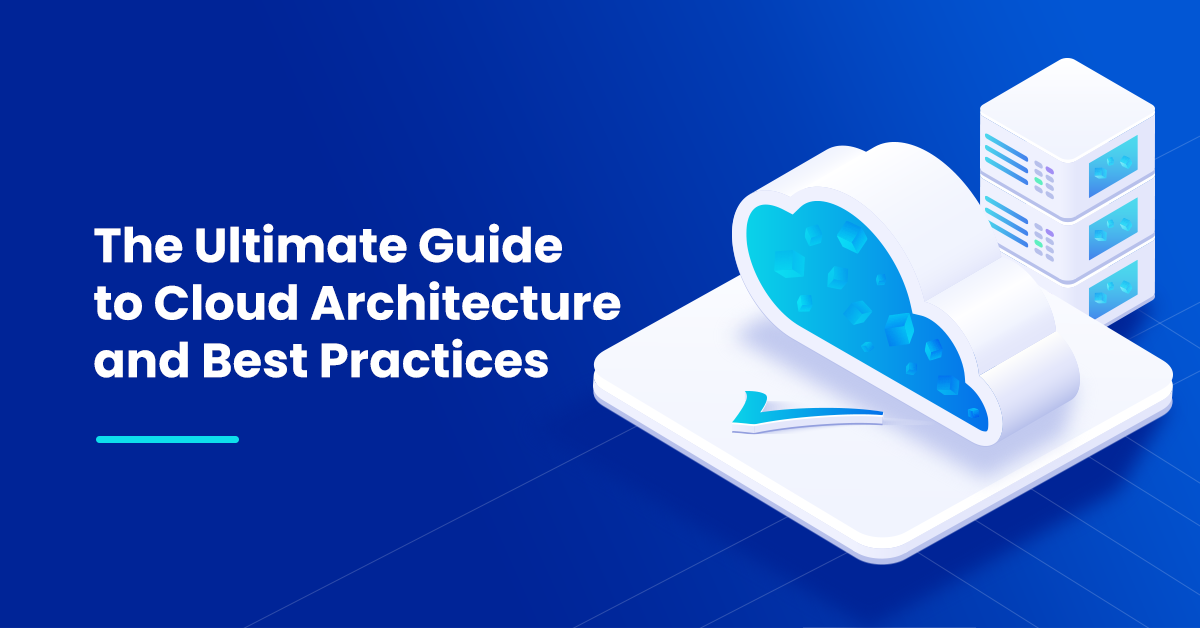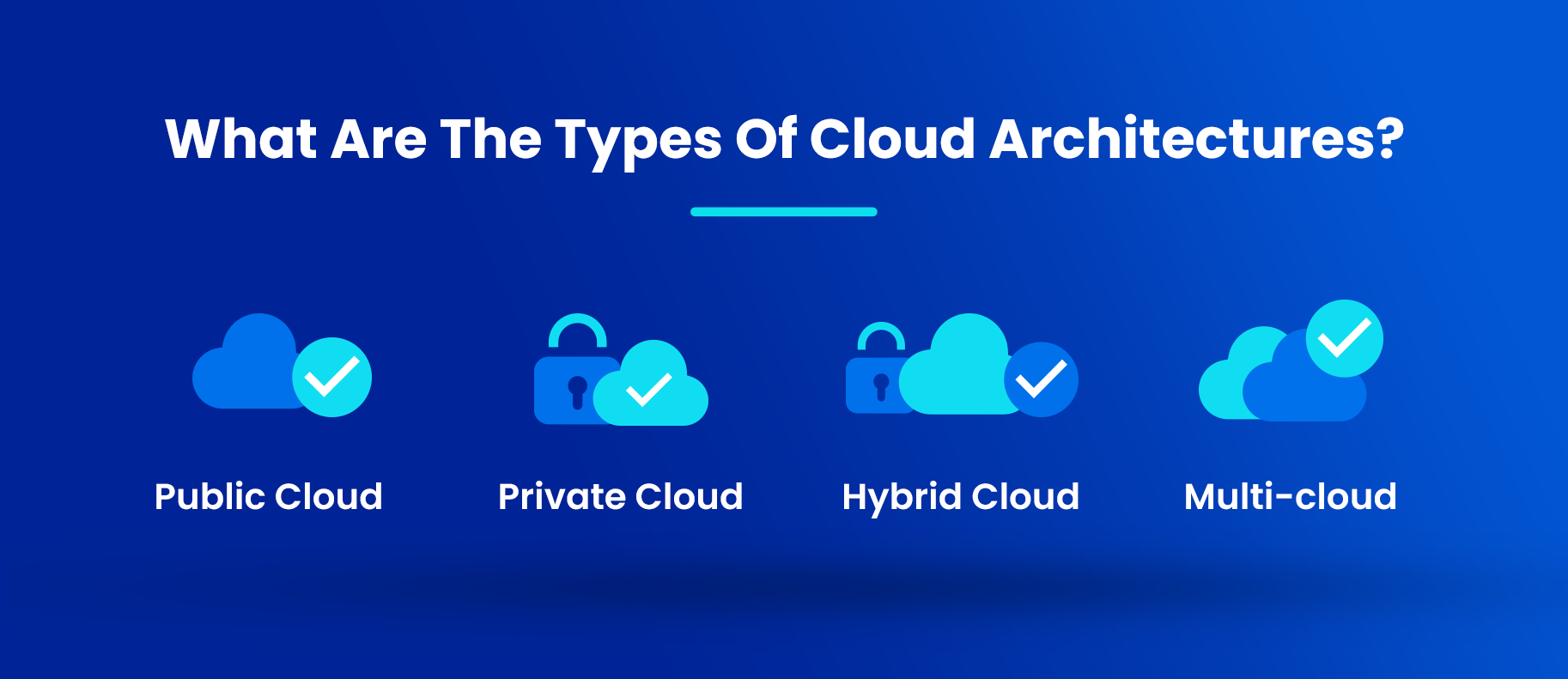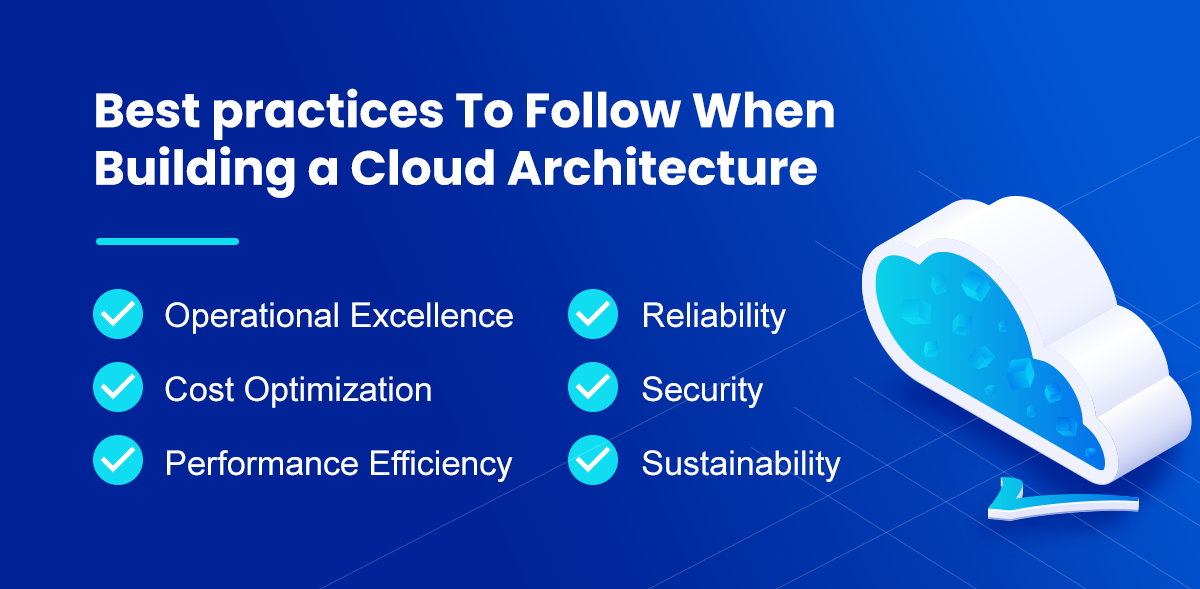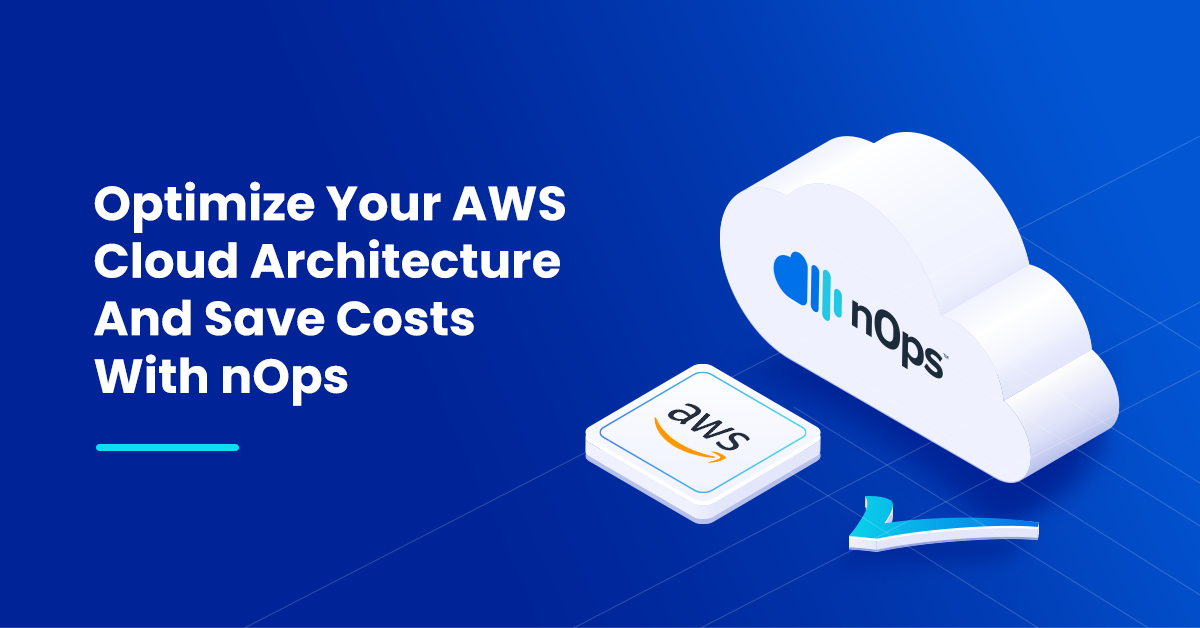
As organizations increasingly migrate to the cloud to enhance their overall return on investment (ROI), it becomes crucial to establish high-performing and secure cloud architectures that align perfectly with business requirements. Cloud architecture has become an integral part of deployments as it unifies the ecosystem for all your cloud components. In this article, we will explore everything there is to know about cloud architecture.
What is Cloud Architecture?
Cloud architecture refers to the integration of different technological components to build a cloud environment where scalable resources can be pooled and shared across a network. It serves as a blueprint for your cloud, defining how different cloud technologies, applications, workloads, and other components interact. The key parts of cloud architecture include:
- Backend platform (storage and servers)
- Frontend platform (client platforms or devices used to access the cloud)
- Cloud-based delivery model
- Network
The ideal cloud architecture focuses on scalability and agility, while also considering the unique and complex needs of users, applications, and workloads.
What Are The Types Of Cloud Architectures?
Public Cloud

With a public cloud, users access shared resources through virtual servers, enabling them to leverage more powerful servers and cloud equipment at a lower cost. Public clouds follow a multi-tenant approach, where organizations or “cloud tenants” share the same storage, hardware, and network devices. Public cloud providers like AWS allow users to deploy applications that can be accessed over the internet. While public clouds offer scalability and cost-effectiveness, they provide less control over the cloud architecture compared to private clouds.
Private Cloud
A private cloud is operated and owned by an organization or a third-party provider, dedicated to serving only one organization. It offers more control over data and customization compared to public clouds. Private clouds may have limitations on computing and cloud storage, but these limitations also provide greater protection against potential attacks. However, private clouds are less scalable and more expensive than public clouds.
Hybrid Cloud
A hybrid cloud combines the benefits of both private and public clouds, allowing users to take advantage of the cost-effectiveness and scalability of the public cloud, along with the security and control of the private cloud. This approach is useful when businesses have workloads with sensitive data that they want to keep in the private cloud while moving the rest to the public cloud for cost optimization.
Multi-cloud
A multi-cloud architecture involves using multiple cloud providers to meet different cloud requirements within an organization. This approach gives businesses the ability to decide where their workloads, applications, and data should be hosted. By adopting a multi-cloud setup, businesses can enhance redundancy, availability, and overall performance by spreading workloads across different cloud providers and easily switching between them. It allows businesses to mix and match network, storage, and cloud resources from different providers to find the best fit for optimum performance and minimized costs.
Best Practices To Follow When Building a Cloud Architecture

1. Operational Excellence
Operational excellence involves continuously monitoring systems and improving the cloud architecture and its internal processes. Instead of making drastic changes at once, it is advisable to make incremental changes to avoid failure or unexpected events. Documenting procedures for better understanding and troubleshooting is also crucial.
2. Cost Optimization
Cost optimization is a major concern when migrating to the cloud, and it should be taken into account when building the cloud architecture. By implementing the right cost optimization strategies, businesses can significantly reduce overall cloud spending. Analyzing the expenses of each functionality and component of the cloud architecture, dropping components with high operational costs, and replacing them with better alternatives are effective ways to optimize costs.
3. Performance Efficiency
Designing the cloud architecture in collaboration with the right cloud service provider is essential for improving performance efficiency. The focus should be on structuring and streamlining computing resources by selecting the right resource sizes and types to optimize workloads. Automation and AI can be used to identify areas of improvement and create a more effective and high-performance cloud architecture.
4. Reliability
Reliability ensures that workloads perform as expected, recover quickly from outages or failures, and meet the required demands dynamically. Building an automated recovery process to predict and respond to failures, and using autoscaling to avoid overprovisioning or underprovisioning are important practices. Establishing processes to manage changes in demand and monitoring resources is also recommended.
5. Security
Security should be a top priority when building your cloud architecture. Ensuring the integrity of data, detecting security breaches, and managing user permissions are essential aspects. By maintaining a secure cloud environment, organizations can confidently run their applications and workloads on the cloud.
6. Sustainability
Taking proactive measures to minimize the environmental impact of running applications on the cloud is crucial. Businesses should establish a responsible model for achieving sustainability and maximize resource utilization while minimizing costs. Ensuring continuous monitoring and hardening of all applications and instances helps maintain a secure environment. Automating security with notifications for unauthorized access provides an extra layer of protection.
Optimize Your AWS Cloud Architecture And Save Costs With nOps

Cloud architecture can present challenges, and if not managed meticulously, costs can escalate significantly. nOps, an AI-driven AWS cloud management platform, offers a solution to decrease AWS bills by over 50% on auto-pilot. Leveraging AI and machine learning, nOps continuously analyzes and optimizes cloud costs. Its features include cost allocation tagging, automated EC2 instance scheduling, planning for spot instances, and cost history reporting, empowering businesses to reduce AWS costs while optimizing their cloud architecture.
With nOps, you can:
- Pay less for what you use.
- Automatically pause idle resources.
To start saving, sign up for nOps today.
FAQs
Q: What is cloud architecture?
A: Cloud architecture is the integration of different technological components to build a cloud environment where scalable resources can be pooled and shared across a network.
Q: What are the types of cloud architectures?
A: The types of cloud architectures include public cloud, private cloud, hybrid cloud, and multi-cloud.
Q: What are the best practices for building a cloud architecture?
A: The best practices for building a cloud architecture include operational excellence, cost optimization, performance efficiency, reliability, security, and sustainability.
Conclusion
As organizations increasingly adopt cloud technologies, understanding and implementing cloud architecture best practices becomes essential. By following these best practices, businesses can build high-performing, secure, and cost-effective cloud architectures that align with their unique requirements. Remember to continuously monitor and optimize your cloud architecture to ensure scalability, efficiency, and reliability. With the right approach and tools like nOps, businesses can unlock the full potential of the cloud while keeping costs under control.
